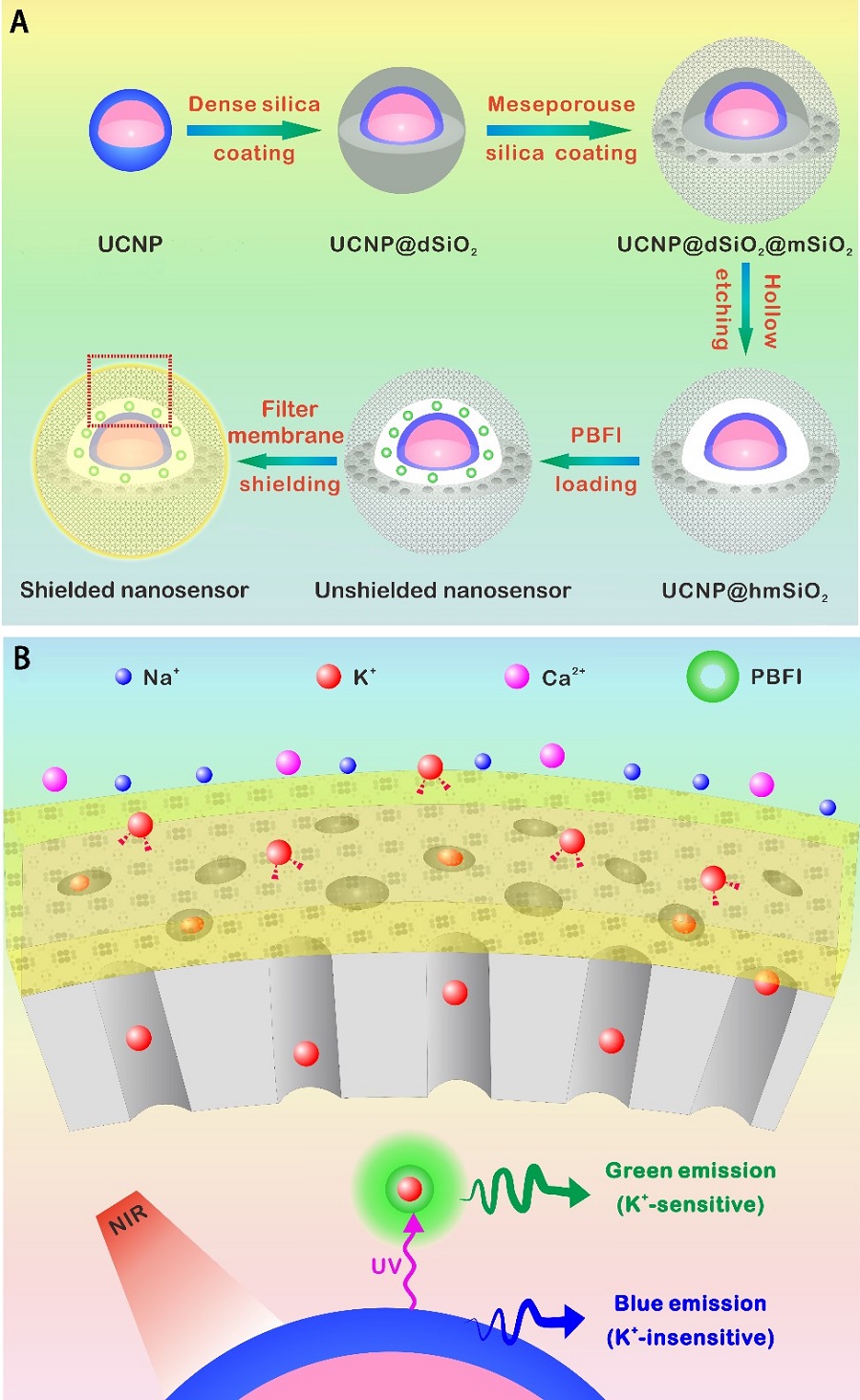
In a recent study published in Science Advances, the researchers from Dr. DU Jiulin’s and Dr. XIONG Zhiqi’s Labs at the Center for Excellence in Brain Science and Intelligence Technology, Institute of Neuroscience of the Chinese Academy of Sciences (CAS), and the collaborators from Shanghai Institute of Ceramics of CAS, reported a highly sensitive and selective potassium ion (K+) nanosensor that can be excited by near-infrared (NIR) light.
K+ is an essential component of neural activity. The difference between its intracellular and extracellular concentration affects neuronal activation and synaptic transmission, and changes itself upon spiking activities. Despite the demand for a selective K+ sensor, the previous efforts in developing such sensors resulted in limited satisfaction in differentiating K+ from sodium ion (Na+).
For reporting K+ concentration, non-invasive fluorescence detection of K+ holds great potential to convey the spatial and temporal information about [K+]. Thus a fluorescent K+-selective sensor is required to unravel the role of K+ in complex neural interactions across various scales in the brain.
The new nanosensor developed by the researchers in this study was created by encapsulating upconversion nanoparticles (UCNPs) and a commercial K+ indicator in the hollow cavity of mesoporous silica nanoparticles, followed by coating it with a layer of K+-selective filter membrane. K+-permeable membrane filter on the nanosensor is effective at filtering out other cations and capturing K+ ions exclusively. The UCNPs convert NIR to ultraviolet light, which excites the K+ indicator, thus it allowed the detection of the fluctuations of [K+] in cultured cells and intact brain of mouse and zebrafish under infrared illumination.
To demonstrate the wide application of this new nanosensor, the researchers used it in a migraine mouse model and epilepsy zebrafish model. They hypothesized that cortical spreading depression (CSD) is the underlying mechanism of the migraine aura.
The CSD, a slowly propagating wave of depolarization followed by brain activity suppression, is remarkably complex and involves dramatic changes in both membrane potential and [K+]. Although accurate measurement of [K+] is possible using microelectrodes, their fabrication is technically challenging and their deployment involves brain invasion. Furthermore, from one or two single electrodes, it’s difficult to obtain the spatial and temporal aspects of [K+]. By using the newly developed nanosensor in the mouse brain, the researchers observed that a wave of increasing [K+] propagated gradually across the cortex, and provided a new window to explore the mechanism underlying the CSD.
While the initiation of epilepsy is still in debate, it was suggested that defects in extracellular potassium buffering and the thus accumulated potassium may facilitate epilepsy initiation and propagation by elevating neuronal activation.
To test this possibility, the researchers simultaneously monitored the neuronal activity and the extracellular potassium concentration by deploying the newly developed nanosensor in the brain of zebrafish larvae panneuronally expressing red calcium sensor. Upon epilepsy induction, both neuronal calcium activity and extracellular potassium concentration increased widely. However, potassium accumulated beyond regions with elevated neuronal activity, suggesting that potassium increase did propagate away from the releasing loci, consistent with its possible contribution in epilepsy initiation and propagation.
This study demonstrated that the developed nanosensor construction strategy would contribute not only to scientific discoveries and breakthroughs in neuroscience research, but also to the development of other selective ion sensors.

Figure: Design and sensing mechanism of the K+ nanosensor. (Image by CEBSIT)

86-10-68597521 (day)
86-10-68597289 (night)

52 Sanlihe Rd., Xicheng District,
Beijing, China (100864)

